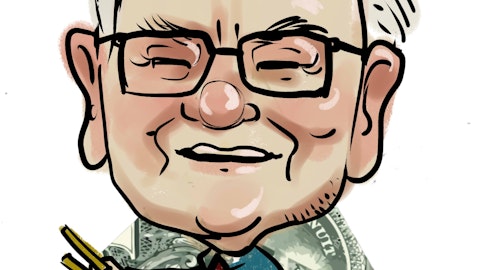The cable TV industry has consistently suffered subscriber losses over the past few years. Time Warner Cable Inc (NYSE:TWC)‘s subscriber base has declined from 13.3 million in 2007 to 12.2 million at the end of last year.
In contrast, satellite networks such as DIRECTV (NASDAQ:DTV) and DISH Network Corp. (NASDAQ:DISH) have performed much better.

Pay-TV is the highest revenue-generating stream for Time Warner Cable Inc (NYSE:TWC), as it contributes approximately 46% to the overall top line.
Time Warner Cable’s US Pay-TV market share has dropped from 13.4% in 2007 to 11.4% at the end of 2012. The decline is primarily due to superior performance by its competitors and the cable company’s late shift to the digital platform. Thus, several Time Warner Cable subscribers made a switch to satellite networks.
It must be noted, however, that other factors, such as increasing demand for fiber- optic solutions, HD/DVR services offered by satellite networks and sub-standard customer service by Time Warner Cable Inc (NYSE:TWC) also contributed to its decline.
Going forward, I expect the subscriber trend to improve slightly and the company’s market share to stabilize at around 11%.
Key revenue streams
Time Warner Cable is the second largest US cable TV provider. It generates approximately 46% of its total revenue through cable TV operations, followed by broadband services at 28% and digital phone (voice over internet protocol) at 11%.
With a current market cap of $27 billion, the stock currently trades at around 93% of its 52-week high. The company operates on an EBITDA margin of approximately 38% and this year’s FCF-to-EBITDA is expected to be around 44%.
Competitive landscape
Part of Time Warner Cable Inc (NYSE:TWC)’s drop in subscribers is due to a customer shift to satellite services.
Parallel to cable TV, satellite service providers, such as DirecTV and DISH Network Corp. (NASDAQ:DISH) directly compete with Time Warner Cable.
DirecTV currently has a 19% market share in the pay-TV segment with a robust presence in the US and Latin American markets.
It generates more than half, or 56%, of revenue through US Satellite TV, followed by satellite services in Latin America, where 22% of sales are generated. It has a market cap of $31.4 billion, and the current stock price is trading at 98% of its 52-week high.
During fiscal 2012, it maintained a gross margin of 46% and going forward, FCF-to-gross profit is expected to be around 19%. DirecTV has a massive reach across the US, as it’s accessible even from the most isolated areas.
It must be highlighted that DIRECTV (NASDAQ:DTV)’s satellite service has relatively low initial costs, a greater variety of HD channels relative to its competitors and sets the industry benchmark for customer service.
Dish Network generates 69% of its revenue through satellite services. The closest second is TV advertising, which accounts for 10% of sales followed by DVR Service at 9%.
It had approximately 13.5% market share in the pay-TV segment by the end of 2011. The company has a market cap of $16.7 billion, and the stock has been trading at 95% of its 52-week high.
During fiscal 2012, the company operated on a gross margin of 46%, which is similar to DirecTV. This year’s FCF-to-gross profit is expected at around 22%.
Going forward, gross margins may decline as content owners are now demanding a higher carriage fee. In order to maintain its competitive edge and avoid subscriber loss, Dish Network may absorb the rising content costs at the expense of gross margins.


